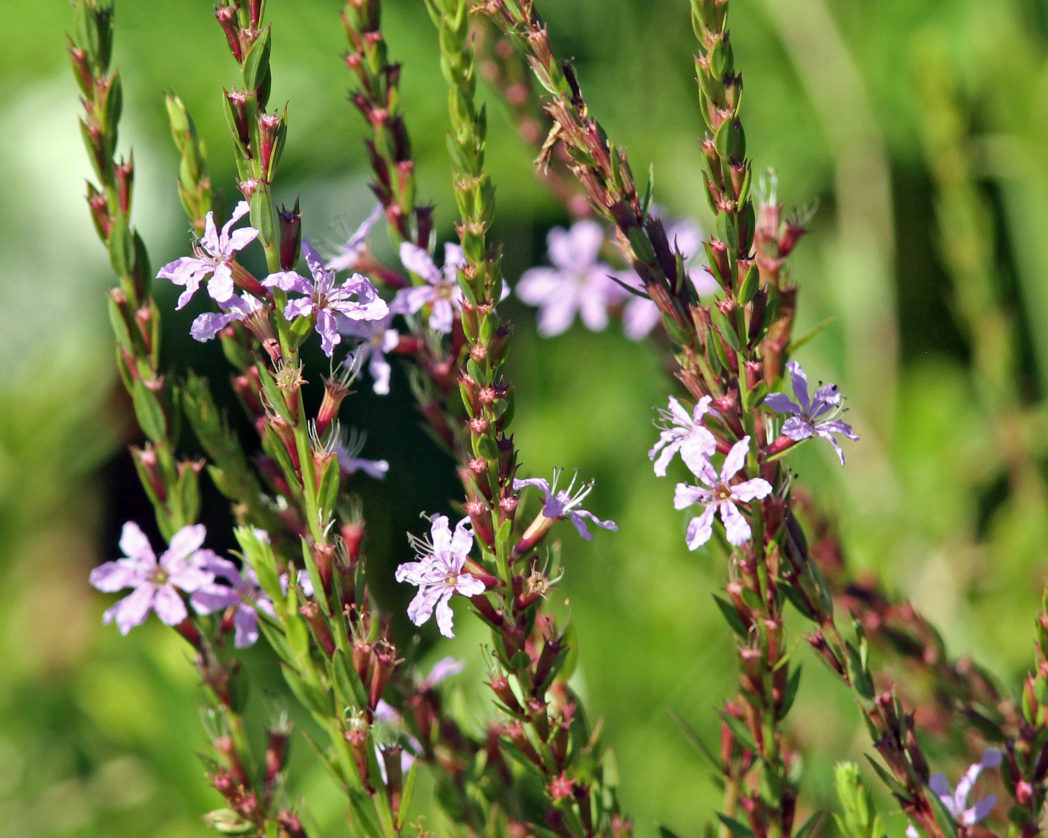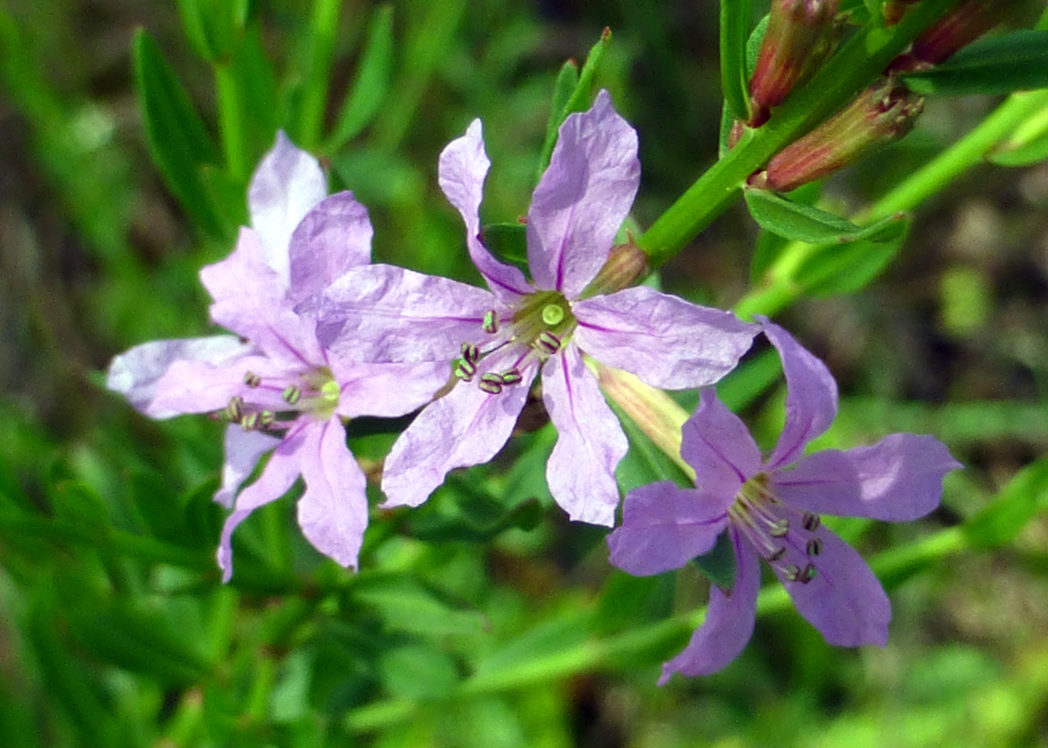Winged loosestrife
Pictured above: Winged loosestrife (Lythrum alatum) by Eleanor Dietrich. Click on terms for botanical definitions. View post as a PDF.
Winged loosestrife (Lythrum alatum) is a fast-growing subshrub with many star-shaped flowers. It typically blooms in summer and attracts a plethora of pollinators. It occurs naturally in freshwater marshes and wet flatwoods, prairies and roadside ditches throughout much of Florida.
Flowers may be born singly or in pairs on spike-like racemes. They have 6 purple to pinkish petals, each with a magenta midvein. Stamens (also 6) have pink filaments and purple or green anthers. Calyces are 6-lobed and partially fused, forming a tube. Leaves are sessile, lanceolate to elliptic, with entire margins. They are mostly alternately arranged but may be opposite. Stems are 4-sided with slightly raised wings. They are erect and multi-branched. Lower stems are woody, upper stems herbaceous. Fruit is a dehiscent capsule with many time seeds.
The genus name Lythrum comes from the Greek lythron, meaning “gore” or “blood,” and may allude to the flower color of some species. The species epithet alatum is from the Latin āla (alatus), meaning “winged,” and refers to the winged stems.

Family: Lythraceae (Loosestrife family)
Native range: Nearly throughout Eastern panhandle and peninsula
To see where natural populations of Winged loosestrife have been vouchered, visit florida.plantatlas.usf.edu.
Hardiness: Zones 8A–10B
Lifespan: Perennial
Soil: Moist to wet poorly drained soils
Exposure: Full sun to minimal shade
Growth habit: 2–3’ tall, nearly as wide
Propagation: Seed, cuttings
Garden tips: Winged loosestrife is suitable for moist to wet wildflower gardens, naturalistic landscapes and habitat restoration. It is easy to grow in the right conditions, but it is not salt- or drought-tolerant. It may spread on its own via underground rhizomes. Occasional pruning will help keep the plant looking neat.
Winged loosestrife seeds are occasionally available from the Florida Wildflower and Seed Growers Cooperative. Plants are often available from nurseries that specialize in Florida native plants. Visit www.plantrealflorida.org to find a nursery in your area.
For more information on other Lythrum species, see:
Florida loosestrife (Lythrum flagellare)

